Don't wanna be here? Send us removal request.
Text
What is Topic Modeling?
Topic modeling is a type of statistical modeling for discovering the abstract “topics” that occur in a collection of documents. Topic Models are, in a nutshell, a type of statistical language model used for uncovering hidden structures in a collection of texts.
In this article, we’ll cover LDA, and implement a basic topic model. Read More :- https://lakebrains.com/topic-modeling-in-python/
#artificialintelligence#nlpsoftware#nlpservice#data modeling#lda#datascience#python#data modeling in python
1 note
·
View note
Text
Publish a browser extension to chrome store

Introduction
This blog gives a description about how you can upload your browser extension on the chrome web store.
But before publishing it online you need to load and test your extension locally and check if its functionality is achieving what it is planned to.
Steps to publish browser extension :-
Register as a Chrome web developer
Create a zip folder
Upload files
Add assets for listing
Submit files
Registration
To publish your extension on chrome web store you need to register as a chrome web developer on chrome store.
Once, you register as a developer, you can setup your account by clicking on the account option as shown below:-
In this you can provide the information about your developer profile.
2. Create a Zip folder
To publish the extension you need to create a zip folder which contains the manifest file and other files or items of your browser extension.
The manifest file must specify the following elements:-
“name” – The value of this element is the name appear in the chrome web
store.
“version”- This tells the version of the extension
“items”-This specifies the icons your extension uses.
“description”- It is a string which describes about your extension .
3. Upload files
Steps to upload files are-
Go to Chrome’s developer dashboard.
Click on the Add new items button
Click on choose file > your zip file > upload

4. Add assets
You need to fill the information’s of the tabs present on the left hand corner of the tab.
Package tab – This tab displays the information about the items being uploaded.
Store listing tab – It contains the details of the uploaded items and how it
Should appear in the browser extension. It contains details like product details, graphic assets.

Privacy - this tab describes about what the extension is all about and justify the permission.

Payment and distribution- In this section you can set that is your extension is free or does it need to be purchased and even you can set the visibility of your extension i.e. you can choose who can see your extension.
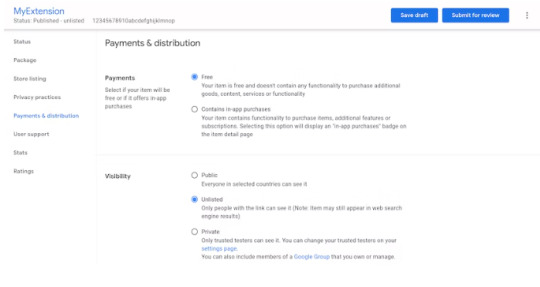
5. Submit the files
To publish your extension click on the submit for review button.
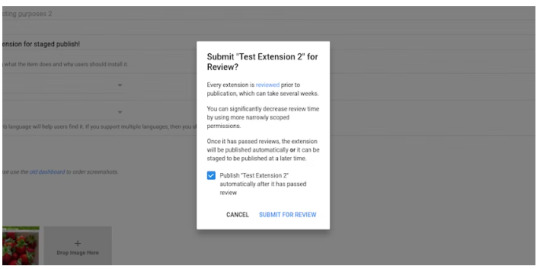
After submitting for review it will undergo a review process.

Conclusion
Publishing a browser extension to the chrome store is a great way to increase your visibility and reach. With over 1 billion active users, Chrome is one of the most popular browsers in the world. If you can get your extension in front of even a small fraction of those users, you could see a significant increase in traffic and engagement. The process of publishing an extension is relatively simple and only takes a few minutes. Once you've created your account and submitted your extension, it will be reviewed by the Chrome team. If everything looks good, your extension will be approved and made available to all Chrome users.
#browser extension development company#nlp service provider company#data visualizations#web development
0 notes
Text
Blogs - Lakebrains Technologies

Learn our insights & technologies in the field of Web Development, Cloud, Computer vision, Web Scraping. Digital Marketing & Data science" Lakebrains a company provides services in the area of web design and development, digital marketing, data science and computer vision to help your business grow multiple folds. Our team consist of experienced professional which are excited about the technologies and its impact in driving growth of its customer.
0 notes
Text
Problems Faced by NLP Practitioners and Developers
The majority of the difficulties come from data complexity as well as features like sparsity, variety, and dimensionality, and therefore the dynamic properties of the datasets. NLP continues to be a young technology; therefore, there’s plenty of room for engineers and businesses to tackle the many unsolved problems that include deploying NLP systems.
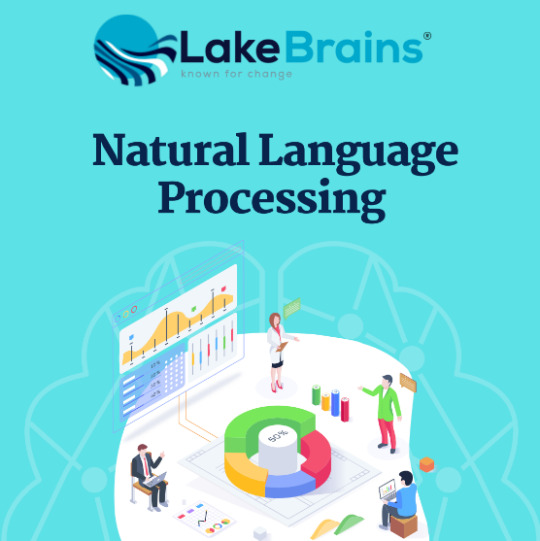
Introduction To NLP
NLP is a branch of computer science or artificial intelligence that deals with a way to manage communication between machines and humans using natural language. NLP includes machines or robots that understand human language, the way we speak, so they can truly communicate with us. It implies the natural processing of human language. You probably heard these names in some places: Google Assistant, Siri, Alexa, and Cortana. Presently, it is the right time to add another option to this list.
LakeBrains Technologies
LakeBrains Technologies is an AI-powered innovative product development company. Lakebrains has developed deep expertise in the development of NLP Service Provider Company (Sentiment & Behavior Analysis), Web Application, Browser Extension Development, and HubSpot-CMS. In our short period of spam, we have majorly worked on SaaS-based applications in sales, customer care, and the HR field.
1. Training Data
NLP is principally about studying the language, and to be proficient, it’s essential to spend a considerable amount of time listening to, reading, and understanding it. NLP systems target skewed and inaccurate data to find out inefficiently and incorrectly.
2. Development Time
The total time taken to develop an NLP system is higher. AI evaluates the info points to process them and use them accordingly. The GPUs and deep networks work on training the datasets, which will be reduced by some hours. The per-existing NLP technologies can help in developing the merchandise from scratch.
3. Language Differences
In the United States, the majority speak English, but if you’re thinking of reaching a global and/or multicultural audience, you’ll have to provide support for multiple languages. Different languages have not only vastly different sets of vocabulary but also differing types of phrasing, different modes of inflection, and different cultural expectations. You’ll be able to resolve this issue with the assistance of “universal” models that may transfer a minimum of some learning to other languages. However, you’ll still have to spend time retraining your NLP system for every new language.
4. Phrasing Ambiguities
Sometimes, it’s hard for an additional creature to parse out what someone means once they say something ambiguous. There might not be a transparent, concise aspiring to be found in a very strict analysis of their words. So as to resolve this, an NLP system must be ready to seek context that will help it understand the phrasing. It should also have to ask the user for clarity.
5. Misspellings
Misspellings are a straightforward problem for human beings; we are able to easily associate a misspelled word with its properly spelled counterpart, and seamlessly understand the remainder of the sentence within which it’s used. Except for a machine, misspellings may be harder to spot. You must use an NLP tool with the capability to acknowledge common misspellings of words and move beyond them.
6. Innate biases
In some cases, NLP tools can carry the biases of their programmers as well as biases within the information sets that train them. An NLP could exploit and/or reinforce societal biases, or it could provide a better experience to some users than others. It’s challenging to form a system that works equally well in all situations with all people.
7. Words with Multiple Meaning
No language is ideal, and most languages have words that might have multiple meanings depending on the context. For instance, a user who asks, “how are you?” incorporates a totally different goal than a user who asks something like “how do I add a replacement credit card?” With the help of context, good NLP technologies should be able to distinguish between these sentences.
8. Phrases with multiple intentions
Some phrases and questions even have multiple intentions, so your NLP system can’t oversimplify matters by interpreting only one of these intentions. As an example, a user may prompt your chatbot with something like, “I must cancel my previous order and update my card on file.” Your AI must be able to distinguish these intentions separately.
9. False positives and uncertainty
A false positive occurs when an NLP notices a phrase that ought to be understandable and/or addressable but can not be sufficiently answered. The answer here is to develop an NLP system that may recognize its own limitations and use questions or prompts to clear up the paradox.
10. Keep a Conversation Moving
Many modern NLP applications are built on dialogue between people and machines. Accordingly, your NLP AI must be able to keep the conversation moving, providing additional inquiries to collect more information and always pointing toward an answer.
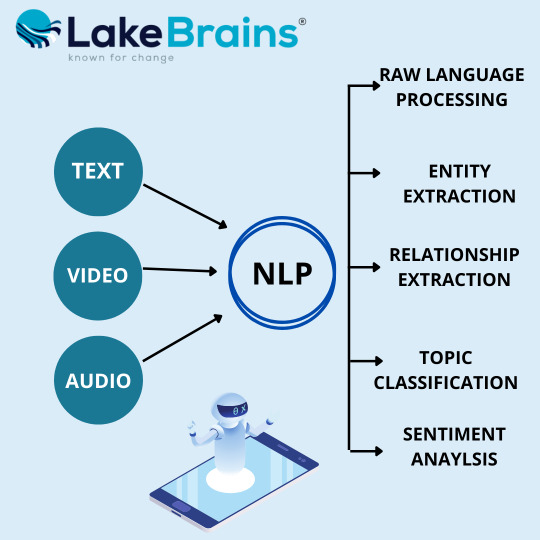
Conclusion
Natural Language Processing is the practice of training machines to understand and interpret conversational contributions from people. NLP-supported Machine Learning is also accustomed to establishing communication channels between humans and machines. NLP can assist organizations and people with saving time, further developing proficiency, and increasing consumer loyalty.
While natural language processing has its drawbacks, it still provides plenty of benefits for each company. Many of those obstacles are going to be torn down within the next few years as new approaches and technology emerge on a daily basis. Machine learning techniques supported by linguistic communication processing could also be used to evaluate large quantities of text in real-time for previously unobtainable insights.
If you’re managing a project utilizing NLP, one of the best ways to tackle these problems is to use a set of NLP tools that exist already and might facilitate your solving a number of these hurdles quickly. Utilize the efforts and creativity of others to supply a stronger product for your consumers.
LakeBrains Technologies
LakeBrains Technologies is an AI-powered innovative product development company. Lakebrains has developed deep expertise in the development of NLP Service Provider Company (Sentiment & Behavior Analysis), Web Application, Browser Extension Development, and HubSpot-CMS. In our short period of spam, we have majorly worked on SaaS-based applications in sales, customer care, and the HR field.
#nlpusa#artificialintelligence#behavior analysis#browserservice#data visualizations#naturallanguageprocessingwithpython#nlp techniques#deep learning#dataanalytics#nlppractitioner
0 notes
Text
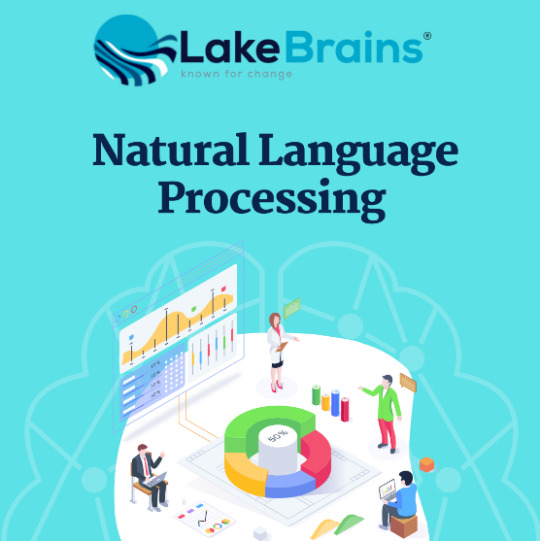
#naturallanguageprocessingwithpython#nlpsolution#naturalprocessinglanguage#nlpservice#artificialintelligence#behavior analysis#data visualizations#machinelearning#developing chrome extension#nlp#natural language generation
1 note
·
View note
Text
Data Visualization - Lakebrains Technologies
Data visualization services helps to communicate company’s data to business users using visual elements while emphasizing on the clarity.
Through the help of Data Visualization we can easily interpret increasingly larger batches of data. Machine Learning makes it easier to conduct predictive analysis
1 note
·
View note
Text





#nlpusa#nlp#datascience#machinelearning#inteligenciaartificial#nlpservice#browserextension#browserservice#website builder#browserautomation#chrome extensions#artificialintelligence#deep learning
0 notes
Text
Migrating Manifest V2 to V3
This blog lists changes being implemented as a part of Manifest V3, the next version of the Chrome Extensions platform. There are a lot of recent features and functional changes for extensions using Manifest V3.
But why Migrate to V3?
As chrome documentation says:- Extensions using MV3 will enjoy enhancements in security, privacy, and performance; they’ll also use contemporary Open Web technologies adopted in MV3, like service workers and promises.
# Updating the manifest.json file
Manifest Version

Service Worker
In Manifest Version 3 background script is replaced by Service Worker. Write the “service_worker” under the "background" field
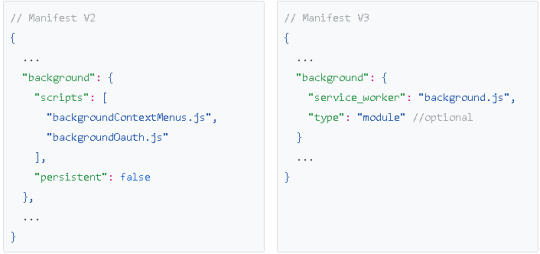
Manifest V3, which does not support more than one background script, if you want to add more, you can optionally declare the service worker as an ES Module by defining "type": "module", which allows you to import further code.
Service Worker One more way from which you’ll be able to include multiple files and call them from a service-worker.Js is to use the importScripts( ) method at the beginning of the service-worker.js script like this:-

Host Permission
In Manifest V3, you have to specify host permissions and optional host permissions separately from other permissions.

Actions
In an earlier version, actions were divided into “browser_action” and “page_action” keys. In Manifest V3, they’re unified into a single field named Action. This can be often done to scale back confusion between those two fields as they ultimately serve a common purpose.
Here’s the V2 manifest:

Here’s the V3 manifest: -

Content security policy
It is a layer of security for the application. It helps you define all the origins from which you're loading any styles, scripts, or data. For every style, script, font, or connection, you have to specify the domains which you are loading in your application.
In MV2, we define “content_security_policy” as a string.
In Manifest V3 it’s an object with members representing alternative CSP contexts.
In Manifest V3:-
extension_pages: This covers pages in extension, including HTML files and service workers.
Sandbox: This covers any sandboxed extension pages that the extension uses.
Additionally, MV3 has put out of action certain Content Script Policy modifications that were allowed in MV2-
The “script-src”, “object-src” and “worker-src” may have only one of the resulting values:
self
none
Any localhost source
Web-accessible resources
To declare the packed resources that require to be accessed online, the web_accessible_resources will now not need an inventory of files. Instead, you’ll now provide a list of objects, each of which maps to a collection of resources like a group of URLs or extension IDs:
In Manifest V2 the object should be like:-

In Manifest V3 the object should be like:-
#API’S DEPRECIATED IN MV3
browserAction
chrome.pageAction
tabCapture
setTimeout
setInterval
chrome.declarativeWebRequest
chrome.app.runtime
chrome.app.window
appview
chrome.bluetooth
chrome.clipboard
chrome.extension.getExtensionTabs()
chrome.extension.lastError
chrome.extension.sendRequest()
chrome.tabs.getAllInWindow()
chrome.tabs.getSelected()
chrome.tabs.onActiveChanged
chrome.tabs.onHighlightChanged
chrome.tabs.onSelectionChanged
chrome.tabs.sendRequest()
chrome.tabs.Tab.selected()
chrome.extension.connect()
chrome.extension.onConnect
chrome.extension.onMessage
chrome.extension.sendMessage()
chrome.fileSystem
chrome.hid
chrome.extension.getURL()
chrome.mdns
chrome.mediaGalleries
chrome.networking.onc
chrome.extension.onRequest
chrome.extension.onRequestExternal
chrome.serial
chrome.socket
chrome.sockets.tcp
chrome.sockets.tcpServer
chrome.sockets.udp
chrome.sync.FileSystem
chrome.system.network
chrome.usb
chrome.virtualKeyboard
DOMParser
CONCLUSION
There are many changes between Manifest Version 2 and Manifest Version 3, and a lot of new features and functions are also added in Manifest Version 3 and many APIs which were supported in Manifest Version 2 are depreciated in Manifest Version 3.
One of the major changes is that the background script is being replaced by a service worker.
A new declarativeNetRequest API is introduced to handle network request modification.
Promise support has been added in Manifest Version 3.
In manifest version 3, an extension can only execute the javascript file which is included in the package; i.e. we cannot remotely host code.

#behavior analysis#natural language generation#artificial intelligence for web development#Data Visualizations#Customer Feedback Analysis#web development compnay#developing chrome extension#migrating v2 to v3#mainfest v2 to v3
1 note
·
View note
Text








#Chrome Extensions Every Web Developer Must Have#BrowserExtension#AIML#artificialintelligence#machinelearning#lakebrienz#lakebrain#lakebrainstechnologies#NLP#BrowserAutomation#nlpservice#nlpsolution#Saas#saasmarketing#saassoftware#naturalprocessinglanguage#nlpsoftware#browserservice#nlpusa#behavioranalysis#dataanalytics#uswebdevelopment#webdevelopment#naturallanguageprocessingwithpython#BehaviourScience
1 note
·
View note
Text
#behavior analysis#natural language processing with python#sentiment analysis python#Data Visualizations#sentiment analysis datasets#developing chrome extension#chrome extension manifest v3#natural language processing in ai#sentiment anlaysis#competitve analysis#analyze competitor#nlp API
3 notes
·
View notes